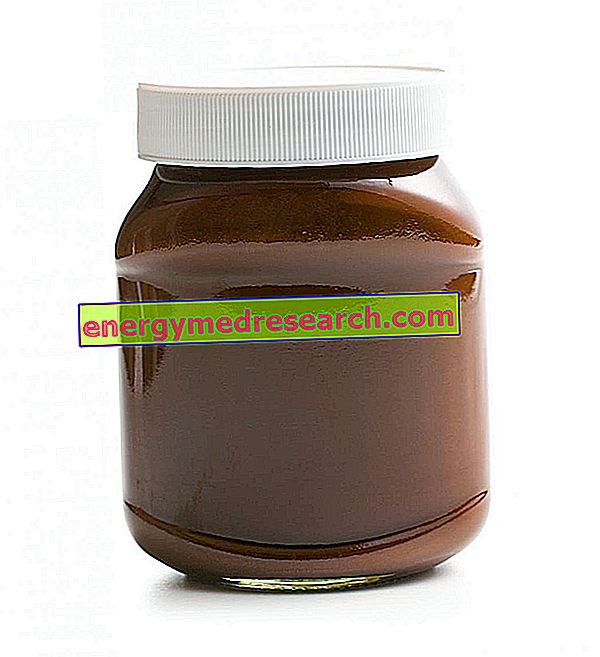Generality
Turbinate hypertrophy is a disorder characterized by chronic swelling of the respiratory mucosa that covers these formations.
The turbinates are three bony structures that are found inside both nasal cavities. These formations are covered by a respiratory mucosa, sprayed with a dense network of capillaries.
The function of the nasal turbinates is to condition the temperature and humidity of the inhaled air, in addition to contributing to its filtering.

Being highly vascularized, the respiratory mucosa that covers the turbinates tends to react in response to certain factors (such as sudden exposure to cold or hot and dry air, an allergic crisis, emotional stress, etc.), temporarily changing its size ; once the reactive stimulus is finished, the tissues involved return to their original volume.
However, in the presence of some anomalies that negatively affect its function, the increase in the size of the nasal turbinates ( hypertrophy ) can become stable over time. This causes a reduction in the space available for normal nasal breathing, making it difficult.
The subject who suffers from turbinate hypertrophy can report various symptoms, including stuffy nose with oral breathing and dry mouth, leakage of serous material (rhinorrhea), loss of smell, nasal itching and tendency to snoring or sleep apnea. Often, the patient with this disorder reacts to the feeling of a stuffy nose, using vasoconstrictor sprays which, in the long run, end up making the situation worse.
Among the major causes of turbinate hypertrophy are allergic rhinitis (seasonal or perennial) and those of non-specific nasal hyperactivity (vasomotor rhinopathy). Other factors that can predispose to the problem are repeated colds, the use of certain drugs, occupational exposure to chemicals or irritating powders, cigarette smoke and emotional stress.
After a careful clinical evaluation of the patient and the ascertainment of the causes of the reported disorders, it is possible to treat the hypertrophy of the inferior turbinates, reducing their size and restoring their correct functionality. Generally, therapy to treat the milder forms of the disorder involves the use of anti-inflammatory drugs. In the most serious cases of nasal obstruction, a surgical procedure is recommended to reduce the volume of hypertrophic turbinates.
What are turbinates?
The nasal turbinates (or cornets) are bony expansions, surrounded by vascular tissue (cavernous body), which in turn is covered by a layer of respiratory mucosa . These structures protrude towards the septum of the lateral walls of the nasal ditches.
The turbinates are generally three for each nostril: the superior and the middle take origin from the ethmoid bone, while the inferior is an independent bone that articulates with the maxillary bone; in some people there is also a fourth nasal cornet, called the supreme turbinate .
Within the respiratory system, turbinates perform important functions of heating, purification, humidification and air flow regulation .

To pass from the vestibule (initial portion of the nose) to the internal nostrils (choana), the air circulates between the adjacent turbinates, then crosses the upper, middle and lower horns, bouncing off their surfaces. As the air rotates in a whirling fashion, the particles in flight come into contact with the mucus that covers the nasal cavities (filtration). Furthermore, the turbinates increase the surface of the nasal basins, prolonging the contact time with the mucosa and thus allowing heating and humidification of the incoming air.
Causes
The mucosa covering the turbinates reacts to various stimuli, such as sudden changes in humidity and temperature, anomalies of the autonomic nervous system, inhalation of irritating and inflammatory vapors caused by viral or bacterial infections. Therefore, the nasal horns change their volume by swelling and deflating. This change of turbinates, generally reversible, affects the lumen of the nasal cavities, as it reduces or increases the useful space for nasal breathing.
In some cases, however, the increase in the size of the nasal turbinates (hypertrophy) can become stable over time, making the passage of air difficult.
Turbinate hypertrophy is one of the main clinical manifestations of simple allergic and vasomotor rhinitis.
Risk factors
The factors that can favor a turbinate hypertrophy stable over time are different; the main ones are:
- Allergic rhinitis (sustained by pollens or by epidermal derivatives of animals, such as dog and cat hair, fungus or mold spores, environmental dust or mites);
- Simple or pseudo-allergic vasomotor rhinitis (nasal hyperactivity syndrome with histamine release following non-specific stimuli, such as cold and heat, changes in position or humidity, emotional stress or cigarette smoking);
- Bacterial or viral infections;
- Family arrangement;
- Air pollution;
- Prolonged use of nasal vasoconstrictor sprays.
Symptoms
The onset of turbinate hypertrophy is almost always subtle: at first, the nasal obstruction occurs inconstantly, then it becomes gradually persistent.
Turbinate hypertrophy can cause the following symptoms:
- Obstruction of one or both nostrils (stuffy nose), which is accentuated in a lying position and during night rest;
- Feeling of bad breathing;
- Increased production of mucus from the nose that runs anteriorly (rhinorrhea) or posteriorly, towards the throat (retronasal discharge);
- Pain in the root of the nose;
- Nasal itching or burning;
- sneezing;
- Reduction of odor perception (hyposmia);
- Nosebleed (epistaxis);
- Oral breathing with dry mouth and throat;
- Halitosis;
- Nasal or metallic voice (rhinolalia);
- Frequent colds that last a long time and heal with fatigue;
- Headache (headache);
- Hearing reduction (hearing loss);
- Ear wadding;
- Dry and irritating cough.
Warning! It should be remembered that the symptoms of a cold last about 7 days. Therefore, a nasal respiratory obstruction of longer duration is probably the expression of a disease which, if not treated properly and timely, can lead to more severe consequences.
Possible complications
The most common complications following turbinate hypertrophy are:
- Chronic sinusitis;
- Relapsing or chronic pharyngitis;
- Roncopathy (snoring) and / or sleep apnea syndrome with marked daytime sleepiness;
- Nasal polyps;
- Recurrent otitis media or serum-mucosa;
- Dependence on the use of decongestant sprays.
Diagnosis
The diagnosis of turbinate hypertrophy is formulated by an otolaryngologist specialist, associating the most adequate investigations to quantify nasal respiratory obstruction and to identify the cause of the anamnesis, the evaluation of symptoms and clinical examination.
In particular, the evaluation of the patient with nasal sinus symptoms should include:
- Rhinofibrolaringoscopy : this endoscopic examination uses rigid or flexible optical fibers to evaluate the possible obstruction of the nasal cavities and to have a view of the state of the mucosa.
- Nasal cytological examination : useful in the differentiation between allergic, non-specific and infectious rhinitis.
- Rhinomanometry : allows the measurement of the air flow inside the nasal cavities, therefore objectively evaluates the respiratory function and the degree of obstruction, allowing to distinguish the functional causes (hypertrophy of the inferior turbinates) from the anatomical factors (deviation of the nasal septum) .
- Allergic screening : the Prick test (epicutaneous test) and the Rast test (search for any specific IgE in blood samples) are useful for identifying food and respiratory allergens in the event that it is suspected that hypertrophy depends on an allergic reaction.
The study of the complications of prolonged nasal obstruction (eg polyposis or sinusitis) can also make use of a computerized tomography of the rhino-sinus district (CT), while, in selected cases, nuclear magnetic resonance allows an accurate and detailed diagnosis. In clinical practice, however, standard radiography has no use whatsoever.
Treatment
drugs
If the problem has not persisted for a long time, it is possible that local therapies with anti-inflammatory products can bring the turbinates back to proper functioning.
Depending on the case, to resolve mild or moderate forms of mucosal hypertrophy, the doctor may indicate the use of nasal or systemic antibiotics, antihistamine drugs, cortisone-based nasal sprays or endonasal vasoconstrictors.
In some cases, the rehabilitation of turbinates can also benefit from thermal inhalation therapy and washing of nasal cavities with sterile saline solutions.
Surgical therapy
Surgical therapy is indicated when other conservative approaches do not allow satisfactory results to be obtained and do not ensure good ventilation.
Several surgical techniques have been used to manage turbinate hypertrophy: these range from traditional treatments (such as partial turbinectomy, inferior mucotomy or submucosal emptying) in which a portion of the turbinates (both mucous, and bone) is removed, up to the recent techniques minimally invasive that involve the use of laser or radio frequencies. These operations can be performed under local or general (total) anesthesia.



